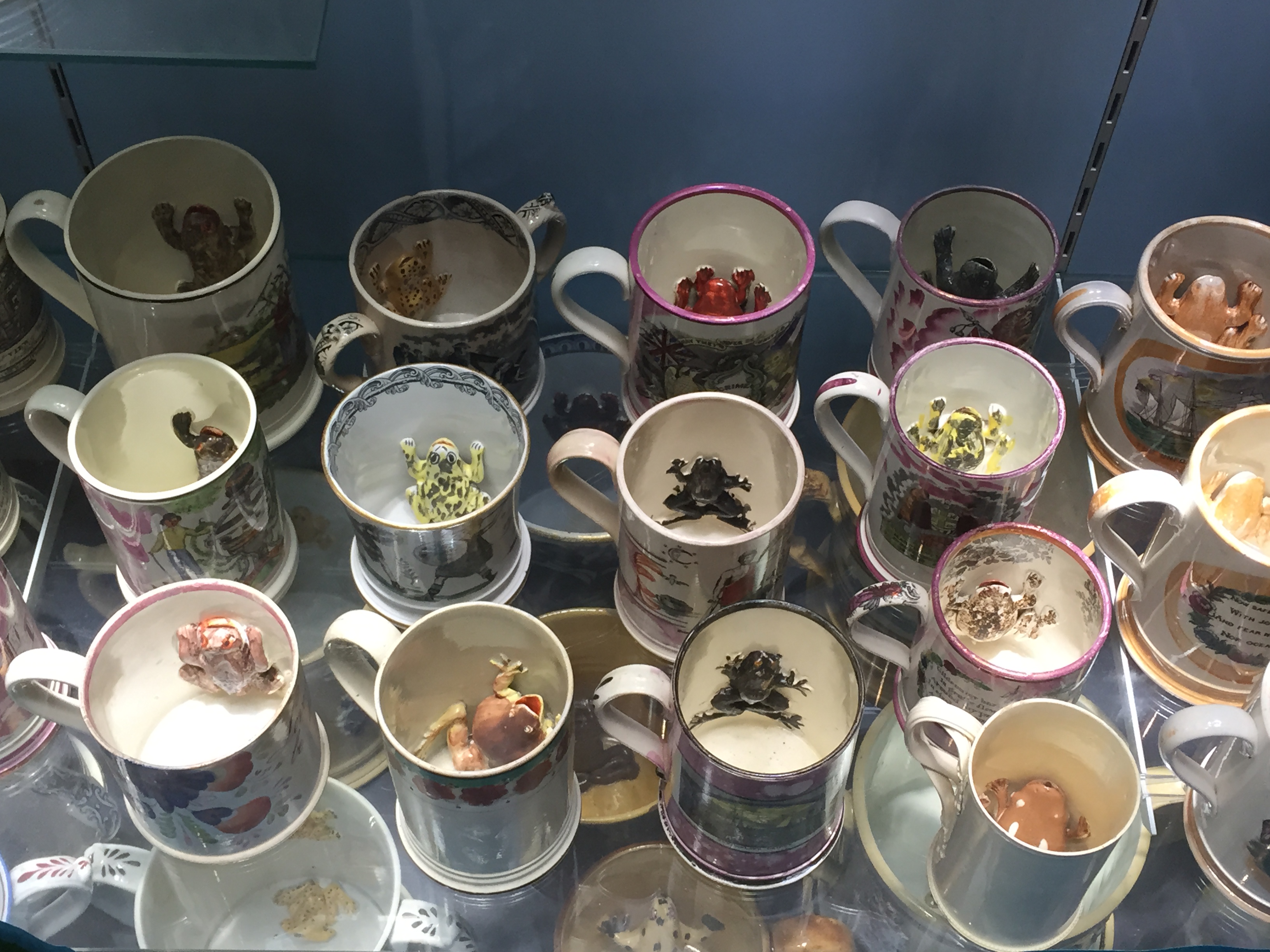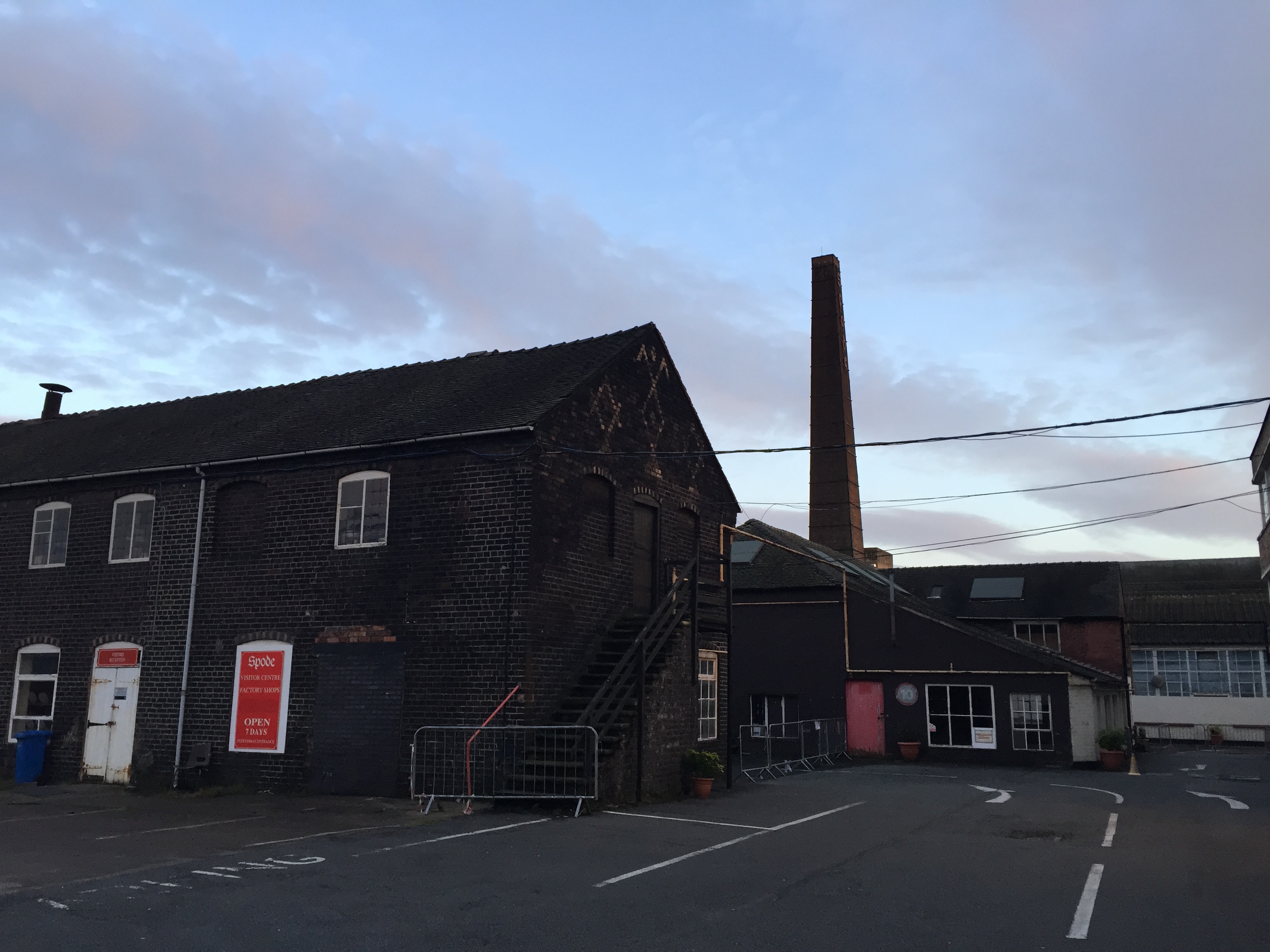Day 7 in England- The Staffordshire Potteries
Through the nineteenth century, fields of bottle ovens, chasmic clay pits, and black coal smoke defined the landscape of the six North Midlands towns known as “The Potteries.” The only region in England named for its principal industry, the Staffordshire potteries employed about 100,000 people at their peak in the late 1700s. Today, those numbers have decreased by over 90%. Undergraduates at Staffordshire University can no longer major in ceramics. The last bottle oven was fired, illegally, in the 1970s, and a Tesco grocery store stands on the foundations of Mason’s Ironstone Works.
 Bottle Oven at Gladstone Pottery Museum
Bottle Oven at Gladstone Pottery Museum
But the pottery industry still runs deep, both in the built environment of Staffordshire and in the people whose families have called Staffordshire home for generations.
Our visit began at the Potteries Museum & Art Gallery, where the unparalleled collections of Staffordshire pottery showed the range of technical advances in processing clay and the limitless creative possibilities of the medium.
 Over 300 examples of this popular and wicked 19th-century ceramic type appear in the Davies Collection of Frog Mugs at the Potteries Museum. The frog stayed hidden beneath dark beer, but would spit up at the drinker when the contents ran through its hollow body and out of its mouth
Over 300 examples of this popular and wicked 19th-century ceramic type appear in the Davies Collection of Frog Mugs at the Potteries Museum. The frog stayed hidden beneath dark beer, but would spit up at the drinker when the contents ran through its hollow body and out of its mouth
We came into contact with industry giants during a session in the museum’s archives. Where else but in England will you see documents like Josiah Wedgwood’s apprenticeship indenture or Thomas Whieldon’s notebook?
 Ceramics Curator and one-time Winterthur Research Fellow Claire Blakey shows pages from a Burslem School of Art sketchbook. This student would have trained to work as a painter and possibly a designer for one of the Staffordshire firms.
Ceramics Curator and one-time Winterthur Research Fellow Claire Blakey shows pages from a Burslem School of Art sketchbook. This student would have trained to work as a painter and possibly a designer for one of the Staffordshire firms.
We then headed to the Gladstone Pottery Museum, the only complete factory to survive from the “bottle oven era.” Site manager Angela Lee took us through every stage of the manufacturing process, from the delivery of clay and coal to adding finishing touches to potted and fired ceramics. An exceptional staff of industry veterans were on site to demonstrate the skills needed in an industry constantly weighing quality against efficiency.
Despite using electricity rather than man-power to spin his wheel, potter Gary used throwing techniques unchanged since antiquity.
Sheila is trained in the art of ceramic flower making. This type of high-relief applied molding first became fashionable in the 1830s and was revived around 1950. I think they’re overdue for a comeback!
The clay objects made by throwers and modelers would be fired in ceramic boxes called saggars. A lot of expensive fuel was required to fire the kiln, and so as many filled saggars as possible were stacked inside. This was risky, too, because one disastrous firing could (and did) bankrupt factories. None of us will soon forget stepping inside the behemoth bottle ovens at Gladstone Pottery.
 Saggars stacked inside the kiln in a bottle oven at Gladstone Pottery Museum
Saggars stacked inside the kiln in a bottle oven at Gladstone Pottery Museum
After firing, ceramics might go to a paintress like Carol, who trained and worked at Coalport Pottery. Her grandfather worked in the Staffordshire potteries, loading and unloading saggars into kilns.
Our day ended at the Spode Works, which closed in 2004 after 234 years in business. Here we learned about ongoing efforts to preserve the factory and its collections, and were treated to a surprise course in transfer-printing by a long-time Spode employee.
After a long afternoon in the factory, we welcomed the English tea service laid out for us by Cassie Holdway on genuine Spode porcelain.
 Deborah Skinner, our tireless guide throughout the day in Staffordshire, points out the Spode mark on the bottom of a saucer.
Deborah Skinner, our tireless guide throughout the day in Staffordshire, points out the Spode mark on the bottom of a saucer.
Paul Holdway was an engraver at Spode for 40 years and his father was once art director at the firm. Here, he shows us the results of hot flat press printing using a 150-year-old printing press and engraved plates once used to decorate lines of Spode pottery. Used since the 1770s, about 35,000 of these transfer-printing plates have accumulated over the years at the factory site, where they remain today.
 Paul Holdway, standing in front of the printing press, holds up the engraved plate used to print decoration on ceramics.
Paul Holdway, standing in front of the printing press, holds up the engraved plate used to print decoration on ceramics.
While we were immersed in technical processes and the finest ceramic art, our day in Staffordshire was ultimately about the people of the pottery industry–those who preserve its past and those who pass on skills developed over centuries of practice.
By Amy Griffin, Winterthur Program in American Material Culture, Class of 2016

